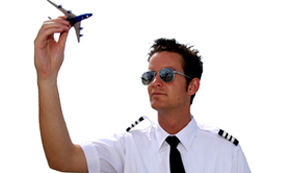A 35% increase in demand for air travel.
A tripling of the region’s airplane fleet.
Up to nearly 13,000 new planes needed.
Predictions for growth in the Asia Pacific aviation industry over the next two decades are impressive.
But one question keeps recurring in the region and, indeed, around the globe.
Will there be enough pilots to fly the new planes and enough technicians to maintain them?
«The airlines say, ‘OK, we’ve just bought a bunch of airplanes and we’ve put in all our funding into the airplane,'» says Bony Sharma, vice president of Mil-Com Aerospace Group, a Singapore-based aviation training company.
«Now where does the funding come in to train the pilots, to train the engineers, to train even the management people, to keep these airplanes operational and safe and flying? That’s the biggest challenge that we’re facing.»
Mil-Com runs training for a number of Asia-based airlines, including the privately owned Vietnamese carrier VietJet Air.
Earlier in February, the low-cost carrier signed a $6.4 billion contract with Airbus for 63 new single-aisle A320 planes, the lease of seven and the option to buy a further 30 aircraft.
Like so many of Asia Pacific’s low cost carriers, however, VietJet Air is struggling to recruit enough personnel to fulfill its lofty ambitions, due to what Sharma describes as an «extremely serious» shortage of pilots.
«All the airlines in Vietnam are heavily dependent on international pilots,» says Sharma. «They’re competing from the same pool of pilots as the Middle East, with the growth of Singapore, the growth of AirAsia. It’s that same pool that all these airlines are competing for, so it’s a big challenge in Vietnam.»
Mil-Com has been working with VietJet Air since it was founded in 2011, training engineers, technicians and cabin crew.
At February’s Singapore Airshow, Mil-Com and Eagle Flight Training of New Zealand signed a Memorandum of Understanding with Vietnam’s Aerospace Engineering Services JSC (AESC), to open a flight school in Vietnam, focused on training pilots.
«Even if we set up 100 airplane flying schools tomorrow, it still wouldn’t be enough,» says Sharma. «The shortage is that extreme»…



